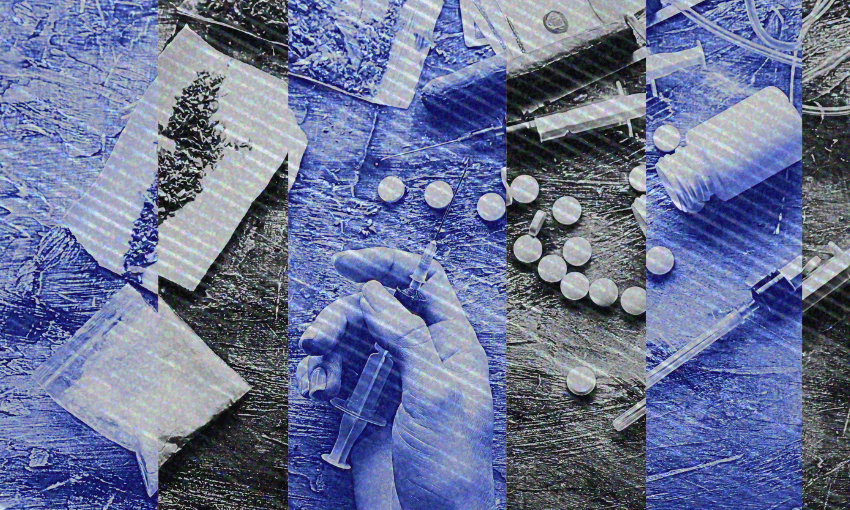New Zealanders are drinking and smoking less, but most other recreational drugs are becoming cheaper, more popular and more available, two new reports show.
Two significant new surveys about drugs in Aotearoa were released this week, offering a rare insight into New Zealanders’ choice of substances, which ones are becoming more popular, which have fallen off, and how the average street prices are changing.
The first is the annual New Zealand Health Survey, run by the Ministry of Health, which collected data from 9,719 adults and 3,062 children about a broad range of physical and mental health experiences. The survey included several questions about smoking, drinking and illicit drug use (only people aged 15 years or older were asked the drug-related questions). It is a face-to-face survey, with respondents chosen at random and weighted to reflect the demographic makeup of the total population.
The second is the New Zealand Drug Trends Survey, run by Massey University’s Shore & Whāriki Research Centre, which has been conducted annually since 2017. An online survey with respondents targeted through ads on Facebook and Instagram, this year’s report collected responses from 10,781 participants. Because it’s a self-selecting survey, the results are not scientific. However, the respondents are more likely to have recent knowledge and experience of the drug market, which offers a useful insight into the habits of regular recreational drug users and the prices they pay.
We are drinking (slightly) less
The Health Survey found the lowest rate of alcohol use since records began in 2011. Of adults aged 15 or older, 76.3% had drunk alcohol in the past year, a decrease from the 81.6% peak in 2018/19. Incidents of heavy drinking have also fallen; 17.8% of adults reported binge drinking at least once a month, down from 22.6% in 2019/20. Weekly binge drinking was at 8.2%, from 12.3% in 2018/19.
The Drug Trends Survey also showed a decrease, with 86% of respondents drinking alcohol in the past six months. The same survey showed 90% last year.
Smoking keeps falling, but vaping is surging
Once a widespread and normalised activity in New Zealand society, smoking is increasingly rare. The health survey found 8.4% of adults were current smokers, roughly the same number as last year. The first survey from 2011 found 18.4% of adults smoked. The number of cigarettes being consumed is falling, too. Chain smokers are getting through an average of 9.2 cigarettes per day, a new record low and down from 11.2 in 2011.
Vaping, on the other hand, has surged. For the first time, the number of daily vapers has overtaken the number of daily smokers, with 9.7% of people vaping daily, 11.9% vaping at least monthly, and 24.7% vaping at least once in their lifetime. That’s a huge increase from the first time vaping stats were recorded in 2015, when just 0.9% were daily vapers.
The Drug Trends Survey also showed vapes overtaking smokes for the first time; 50% had smoked in the past six months, down from 67% in 2018/19. Vaping was at 64%, a big jump from 47% last year and 35% in 2018/19.
Recreational drugs are getting more popular – with a couple of exceptions
Both surveys showed an increase in the use of most recreational drugs.
The Health Survey found 15.6% of adults used cannabis in the past 12 months, a new record high, up from 8.2% in 2011. Weekly cannabis use stands at 5.2%, another record. Cocaine also hit a new record, with 2.4% of respondents trying the drug in the past year, a big increase from the previous record of 1.5% in 2019/20. Hallucinogens reached 3.1%, up from the previous record high of 2.6% in 2012/22. Sedatives or sleeping pills were used by 1.6% of adults, up from last year’s previous record of 1.3%.
There were two notable exceptions to the trend: opioid use was at 1.2%, an increase from last year but well below the 2.2% rate recorded in 2018/19, and amphetamine-type stimulant use is at 1.3%, below the 1.8% figure from 2018/19.
The drug trends survey found a sharp increase in cocaine; 23% had tried it in the past six months, compared to 12% last year. Cannabis, MDMA and methamphetamine held relatively steady at 70%, 45% and 8%, respectively. LSD was at 25%, a decrease from 31% in 2020.
Other notable findings include 19% of respondents used ketamine in the past six months, 18% tried nitrous oxide (nangs), and 2% used morphine or heroin.
Drugs are getting cheaper
Across the board, respondents to the Drug Trends Survey said drugs were getting cheaper and more easily available.
The average price of an ounce of cannabis was $329, down from $368 in 2017/18. Prices were lowest in Waikato, Taranaki and Bay of Plenty and highest in Otago, Southland and the West Coast. Meth had seen an even steeper discount, with a gram costing $360 on average, 36% off the 2017/18 price of $563. It is significantly cheaper in Auckland than in any other area. The average price of a gram of MDMA was $221 in 2024, a 27% decrease from $301 in 2017/18. Prices are fairly consistent across the motu. The average price of a tab of LSD was $29, compared to $36 in 2017/18.
Drugs are easier to find
In the drug trends survey, 85% of respondents said cannabis was easy or very easy to find, with 19% growing some or all of the weed they used themselves. When asked how they purchased it, 55% said they bought weed from a private home, 32% purchased in an agreed public location, 31% arranged a home delivery, 19% had purchased from a street market or “tinny house”, and 2% had used the dark web.
There were significant increases in the number of people who said it was easy or very easy to access MDMA, cocaine, ketamine, and LSD. The majority of meth users said the supply was “stable”.



